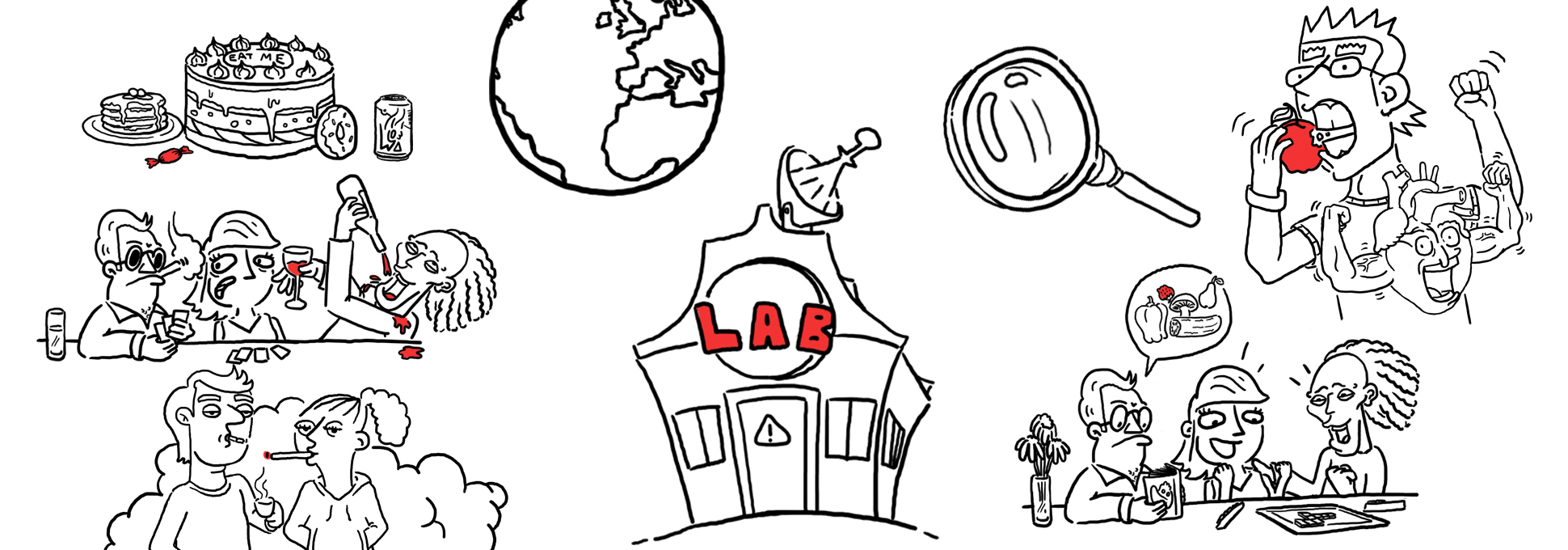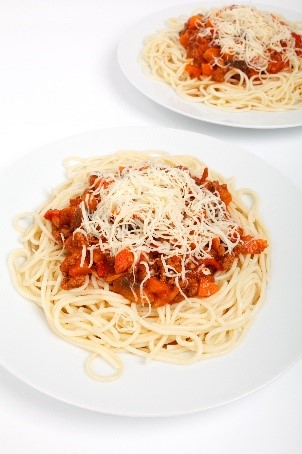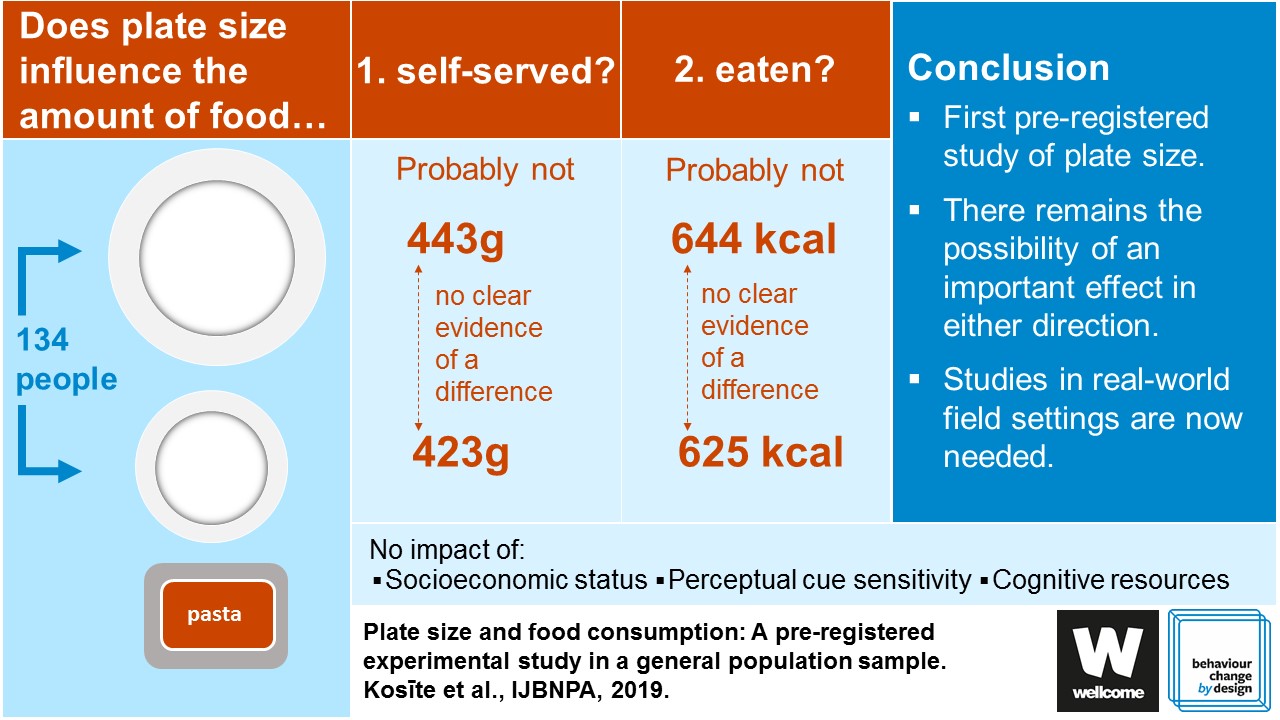




Despite the uncertainty in the scientific literature regarding the impact of tableware size on food consumption, eating from smaller plates is a commonly suggested strategy for reducing the amount people eat. In this study we investigated the impact of using larger versus smaller plates on the amount people eat of a self-served pasta dish.
We found that people using a smaller plate consumed on average 19kcal less pasta than people with a larger plate. Given that on average the meal consumed was 635kcal, this represented no meaningful difference between the two groups. We also found that the difference between the groups was not modified by individual characteristics, including socio-economic position, how well participants inhibit their responses, and sensitivity to environmental cues. The meal micro-structure (e.g. amount self-served, number of bites, eating rate) was also largely unaffected.
Further studies, particularly in real-world settings, are needed to generate more conclusive evidence of whether smaller plates have the potential to contribute to efforts to reduce consumption at the population level.

Plate size and food consumption: A pre-registered experimental study in a general population sample. Kosīte D, König L, De-loyde K, Lee I, Pechey E, Clarke N, Maynard O, Morris RW, Munafò MR, Marteau TM, Fletcher P, Hollands GJ. IJBNPA, 2019. https://doi.org/10.1186/s12966-019-0826-1